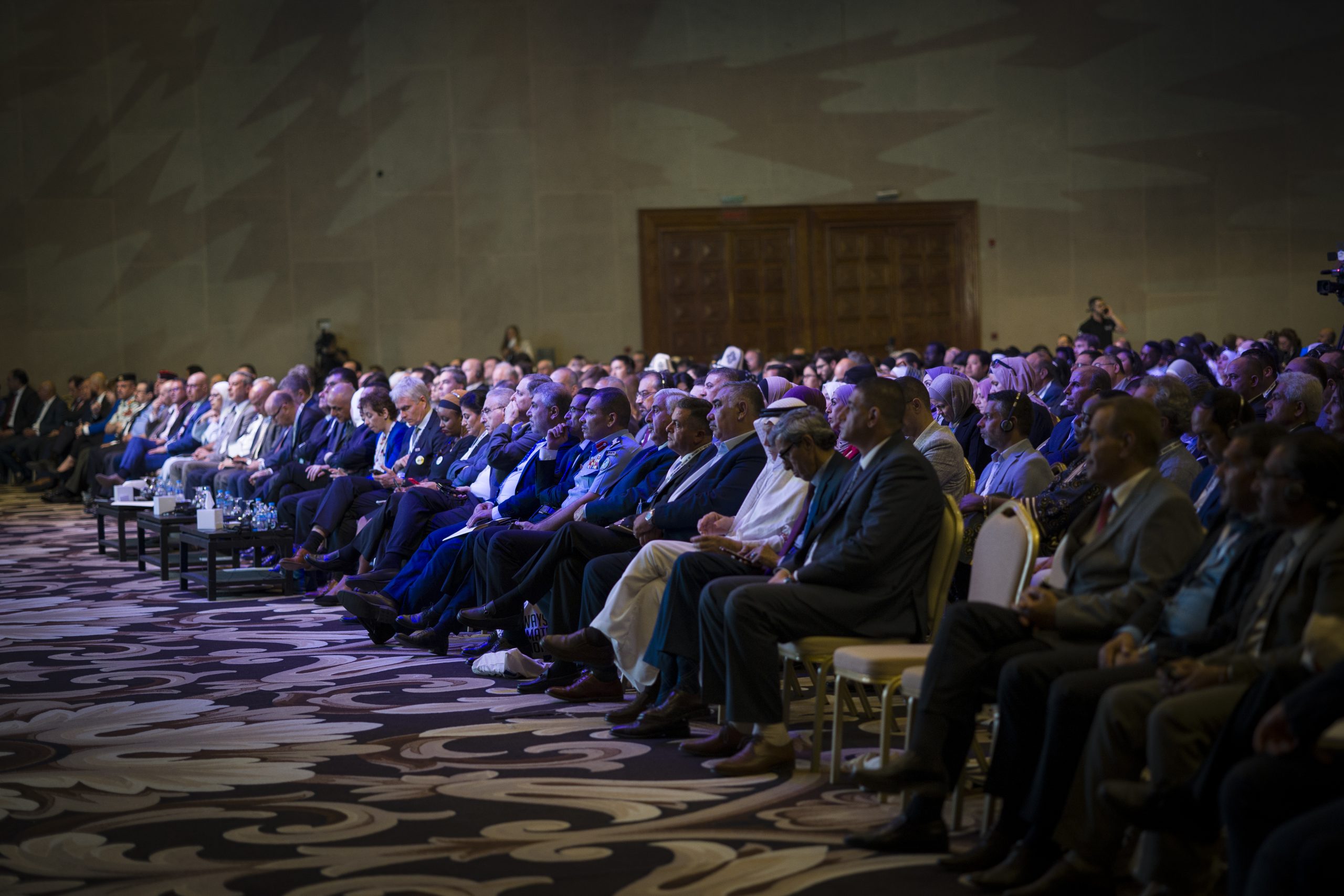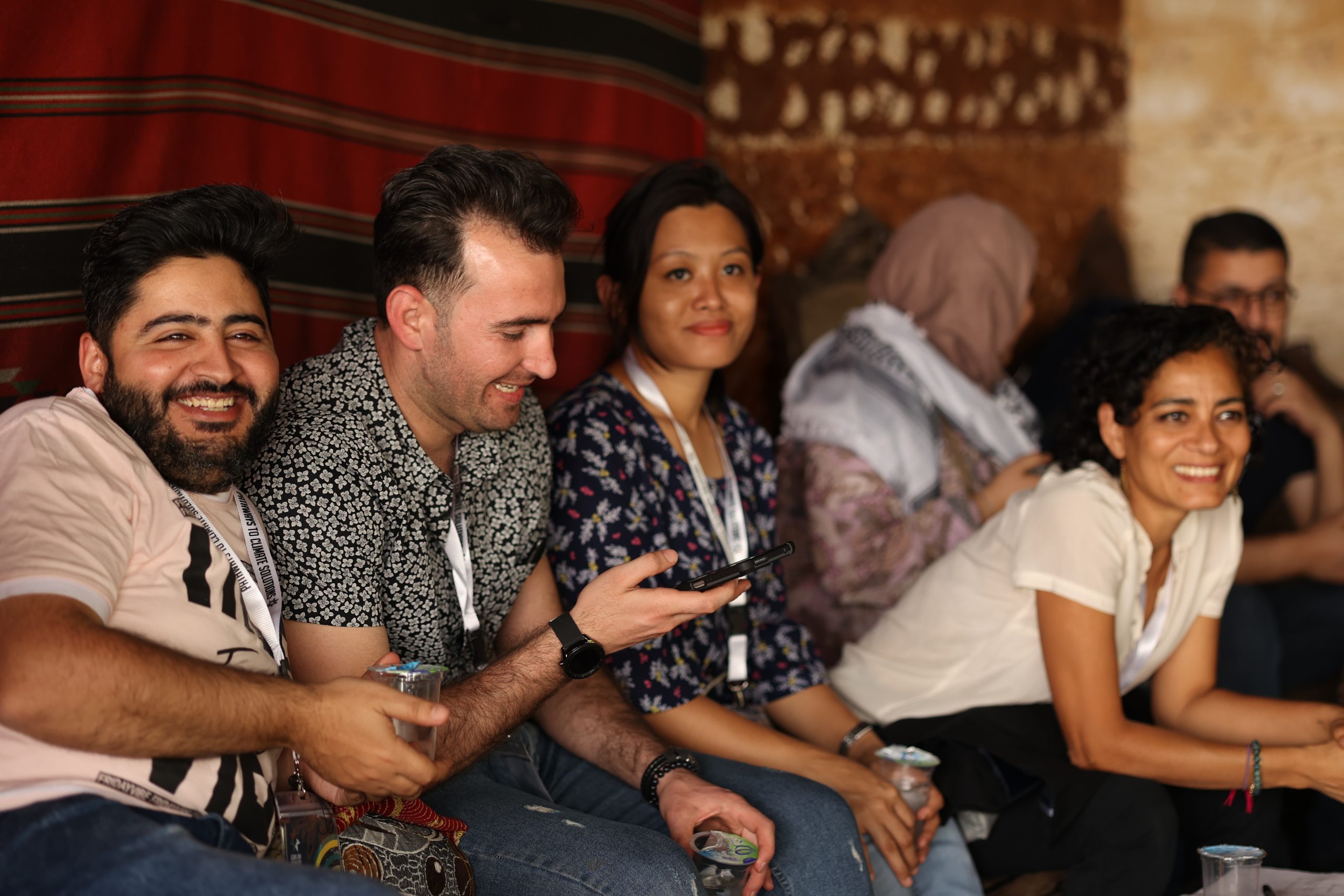2022-11-28
A discussion about the growing global interest in land rights as well as why having data matters with Michael Taylor, Director of the International Land Coalition (ILC).
Managing an alliance of some 300 organizations based in almost 90 countries around the world is a challenging task. But it’s one that Michael Taylor has handled for the past 7 years as director of the Secretariat at the International Land Coalition. The 25-year-old coalition brings together everything from local grassroots groups to national networks to major global organisations and unites them behind the common goal of supporting Indigenous Peoples and local communities to secure their land rights.
Recently, Michael Taylor stopped by the Tenure Facility to talk more about the ILC’s work on land rights, its newly adopted strategy and what lies ahead for its diverse, and at times divergent, membership base.
Why are you visiting the Tenure Facility?
We’re here because there’s a very close convergence in not only what we’re trying to achieve, but how we work, as well. The Tenure Facility is working in some areas, that we work in. And ILC is also moving more clearly and strongly and explicitly as a coalition in support of its Indigenous Peoples and local community members, which is really the sort of core constituency of the Tenure Facility. At the end of the day, what we’re trying to change is very ambitious. But unless we find ways of working together, reaching our ambitions is going to remain out of reach.
You’ve been with the ILC since 2006, what are some significant changes you’ve seen recently in your work to secure land rights?
It’s been quite a journey. When I joined in 2006, ILC had about 50 members and land rights really was quite a niche occupation. Many of them were NGOs; there were not that many what we now called people’s organisations – organisations that actually belonged to farmers or Indigenous Peoples or youth or women or pastoralists or Afro-descendants.
And then from the food price crisis of 2008-2009, there was suddenly a growing awareness of a commercial interest in land and the very unequal competition between large corporations looking for land and local communities that generally had lived on that land, and the inability of those communities to defend their land rights legally against land grabbing because they weren’t recognised legally.
Suddenly, what we saw was a great interest beyond a few land rights focused organisations. And so ILC, through that period, moved from being really quite a niche coalition of focused land rights organisations to a much more diverse coalition of organisations that did many different things, but were more and more convinced that land rights was the way to address them.

Jason Taylor/ILC
The ILC has presented a new strategic vision for the organization taking it to 2030. Tell us about it.
We went through about an almost two-year process of consultation, asking members what they want out of their coalition and how their coalition should be focused.
One of the questions that we asked our members is, “why do you work on land rights? What is the end goal that you’re trying to achieve by working on land rights?” And answers came out really in four clear clusters. The first and the most important was: we work on land rights because land rights are fundamental to meeting the environmental and climate crisis that the world faces today. Also included was overcoming extreme inequality, building sustainable and resilient food systems and, lastly, building local participation, democracy and defending civic space.
The strategy looks at how do we work on land rights in a way which brings an impact into each of those four areas and shows the relevance of our work on land rights. Because we live in a world with such immediate and pressing crises, talking about land rights, per se, does not always cut the cake. Our strategy takes our work on land rights and presents it in each of these bigger challenges that that we face today.
You talked about how diverse ILC’s membership is. What are some of the challenges and benefits to having such a coalition?
Our diversity is our it’s our biggest opportunity and it’s our biggest challenge. It’s our biggest challenge because diversity on any issue can be difficult to build consensus on. And on an issue as polarised and as often ideological as land rights, it can be particularly challenging.
But the flip side of that coin is that when we can find consensus, that consensus can be particularly powerful. I’ll give you an example: when our members met together in Nepal for the Global Land Forum in 2010, they made a declaration against land grabbing, and they defined what land grabbing is and made a clear statement that we stand against it. That was all of our members who made that – including international organisations like the World Bank or FAO. It was at a time when many were talking about land grabbing and there was a lot of debate about the legitimacy of the term and what it meant and under what circumstances it might have been right or wrong. And our membership just came out clearly and said land grabbing is wrong, we condemn it, and this is what we’re condemning.
I think that helped to bring a lot of clarity and focus to the debate on land grabbing at that time, because people could see in that statement a whole diversity of organisations in a discussion that had become quite polarised ideologically.
What our current challenge now is not to try and find consensus in the whole of our diversity, but to bring that diversity behind the common agenda of our Indigenous Peoples and local community members.
"Our strategy takes our work on land rights and presents it in each of these bigger challenges that that we face today."
The ILC also talks about collecting and managing “people-centred” data. What do you mean by that and why is having this data so important?
There are many different pressures over land. Some of them quite anti-people. What we’re working towards is for the people who are most affected, whose stakes are highest, to lead in the decision-making process over what happens over that land and natural resources.
Data can be very, very powerful in that process because data can quite quickly give you a picture of what’s actually going on. It can make things visible that would otherwise be invisible. It can inform decision making. It can enforce accountability because more and more there are global agreements that also have a land dimension. Even in the UN’s Strategic Development Goals there are three land rights indicators.
Now what we find is that in official data sources – whether those are official data sources and national statistics offices in particular countries or global organisations that have that mandate – often the land-related indicators don’t have data or it’s very patchy. What we’re offering through the work that we do with supporting people’s organisations to generate, manage and use land related data, it is often getting quite a good reception because it’s filling a gap. When it’s not filling a gap – when there is existing data that a government may be putting forward – people-centred data is giving a different picture. It is opening up space for discussion and debate about what the truth is.
We are about to set up a global land observatory together with FAO, UN Habitat and CIRAD (the French Agricultural Research Centre for International Development), which will be hosted at FAO, which will be a sort of central repository for all of this data that will be relevant to the land indicators of the Strategic Development Goals, to monitoring the Voluntary Guidelines on the Responsible Governance of Tenure of Land, Fisheries and Forests, and for us at ILC to measure how close we’re getting to our goals with people centred land governance.

Jason Taylor/ILC
Can’t gathering and sharing this data increase the vulnerability of Indigenous and local communities by making their claims and resources known?
Those are extremely important issues. Whenever we work with people’s data, we’re very clear with the organisations generating their data that they can choose what is made publicly available and what is not. I think that’s critically important when it’s geospatial data, and we do a lot of work on mapping.
Over half of the world’s land surfaces is claimed by local communities and Indigenous Peoples as their own but only 10% of it is legally recognised. We have a site called landmarkmap.org, which makes those claims visible. It shows the territorial claims of Indigenous Peoples and local communities, and we work very closely with the owners of that data on what they want to make visible or downloadable and what should not be. All those protocols are carefully agreed beforehand and, of course, adhered to.
"One of the questions that we asked our members is, “why do you work on land rights? What is the end goal that you’re trying to achieve by working on land rights?”"
And what would you say are the biggest challenges and opportunities your members are facing now?
For challenges, there are increasing levels of violence and impunity against land and environment defenders in many countries. When we met for the Global Land Forum at the Dead Sea in May, we honoured 30 defenders from the ILC network alone who had been murdered since the previous forum in 2018. Another is keeping global attention on the root causes and solutions to crises we face, and not their symptoms.
As for greatest opportunities, there are many. We’re seeing a growing awareness in the climate and environmental crises about the role Indigenous Peoples and local communities have in stewarding land, biodiversity and natural resources, especially in forest areas. In some quarters, there’s also a growing awareness of the importance of system change. Like acknowledging the complexity of the challenges we face in securing land rights, and the need to address these challenges strategically on many fronts simultaneously, across sectors and from local to global. And there is growing recognition that ILC’s diverse network is well-positioned to do this.
Articles